Welcome to our minimalist Montessori homeschool classroom! I'm so excited to give you a tour of our preschool/elementary classroom set up.
This room is used to store work for three of our children and five co-op friends.
I have absolutely LOVED this set up. The kids seem to enjoy it as well.
There's enough room for everyone's work and enough space to move around.
Let's get this tour started!
A Minimalist Montessori Homeschool Classroom Tour
The Room at a Glance
Our classroom is located near the center of our home. There are two windows and two doorways leading to other areas in the home.
Most often, two children will be working at the table in the classroom. The others spread out to the dining room, living room, and front entryway with their work. Each room provides another table and plenty of floor space to spread out.
The view of the classroom in the picture above is taken from our living room looking into our dining room through the window. (The dining room used to be a back porch.) You can see the corner of the dining room table in the picture.
The table is one of my favorite storage spaces in our classroom. There are two storage shelves. The top shelf is where I store extra trays not used on our shelves. The bottom shelf is home to all of the containers I use on work trays.
You can see the doorway into the living room in the picture above and where it is in relation to the table and chairs.
One huge motivator in making sure our learning space is always clean and organized is that I can see it from the living room, kitchen, and dining room at all times.
The picture above is being taken from the second doorway, which leads to the kitchen. As you can see, we have multiple sets of shelves around the walls of the room.
Each set of shelves is home to a different subject in our classroom. Every space has a purpose.
In the picture above you can see our kitchen. Kids are often found participating in food prep or other projects using the counters, stove, sink, etc.
Learning is never confined to one room, but instead occurs throughout the entire downstairs of our home. Our classroom is where we store everything and organize our daily work.
Daily Tasks
When kids walk into our Montessori homeschool classroom from the kitchen, to the right of the door are
clipboards color coded for each student. They are stored in our
file organizer.
Clipboards hold
Daily Task Checklists for kids to work through and have signed as they do their work. The Daily Task Checklists are fabulous for helping kids stay on task.
Above the clipboards is a white board with "Problems of the Day" for elementary learners. Students answer one or two math problems and answer the question in their writing journals.
Not seen in this picture, is our basket of Montessori mats. The basket is directly underneath the clip boards.
Montessori Language Shelves
Next to our daily tasks and work storage are our language shelves.
The shelves in the picture above include work related to writing and reading. You'll notice our moveable alphabets in
print and
cursive are stored under the shelf for easy access.
This photo was taken at the beginning of the year when our
beginning language work was available. As the year progresses, we will replace these activities with intermediate and advanced language work.
I most often have both print and
cursive language and letter work on the shelves as I teach print to preschoolers and cursive to elementary learners.
Our second set of language shelves is home to
grammar and
word study materials presented in the elementary curriculum.
This work will rotate out and make room for mechanics and other language topics as the year progresses.
Because all of our students are at different levels, we tend to continue to use baskets and trays to store work. This makes it easy for anyone to use it.
The group of elementary learners are given lessons in the dining room, where their notebooks are stored. Their assignments may require the use of the materials on the shelves, and go a step further than what you see here.
History Shelves
Older elementary learners are presented the lessons, and are often given a project and/or writing assignment to work on.
On the bottom shelf are bins for each one of our co-op friends. Each bin contains a complete outfit for all weather scenarios, in case kids are too warm or too cold. Sensory regulation is a huge deal in our home. We always want our students feeling comfortable while learning.
Under the
puzzles you'll see kids' map work and time lines of life rolled up and stored. Next to the map cupboard are all of my glass beads used for markers in work activities.
Above the map puzzles is a book shelf where we store history books.
Geography Shelves
Next to the Montessori map puzzles are our geography shelves.
Flag and country activities are stored on the top shelf. Culture activities related to the continent of study are on the bottom shelf.
On the other side of our geography shelves you can find more book shelves related to our science studies. These books are provided for research and study for elementary learners who are working on project based tasks.
Practical life activities are also on display. Right now preschool and some elementary students are working with
dressing frames. We will rotate these out with other practical life tasks. Depending on what the task is will determine where it is stored.
Science Shelves
Our science shelves are located on the wall closest to the living room. The bottom shelf is home to more baskets for our co-op kids with clothes in them.
Math Shelves
On the other side of the living room doorway, our math work is on display as well as more storage for future work and binders I use to store the kids' Daily Task Sheets as well as other checklists where I document progress.
On one set of shelves I keep our basic number and math operation work. Every student is at a different level.
Cards for elementary learners are stored in the baskets on the highest shelf. If they need to use Montessori materials they can. If they're ready to only use paper and pencil, they're able to do that.
The second set of math shelves is home to whatever math "unit" we're working on, whether it be telling time, fractions, decimals or something else.
In the picture above you can see all of our fraction materials. Drawers contain tasks that progress from easy to difficult.
And there you have it! Our minimalist Montessori homeschool classroom has worked for several years with our own kids and co-op friends. We hope it inspires you to design a room that works just as well for your children.
For those who are looking for more Montessori homeschool inspiration, be sure to subscribe to our free newsletter by clicking the link below.
Click HERE to Subscribe to our FREE Newsletter
If you enjoyed this post, you may also enjoy the resources below.


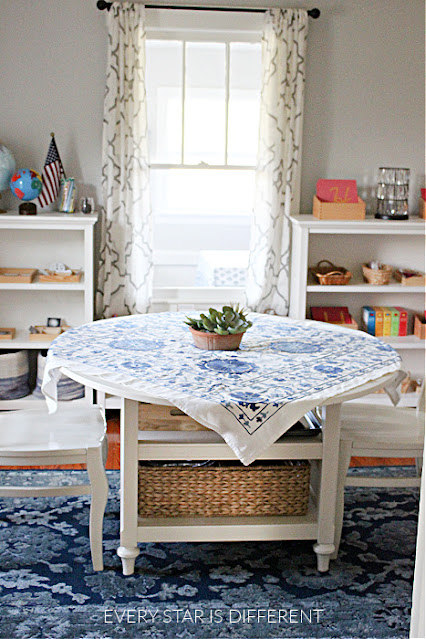
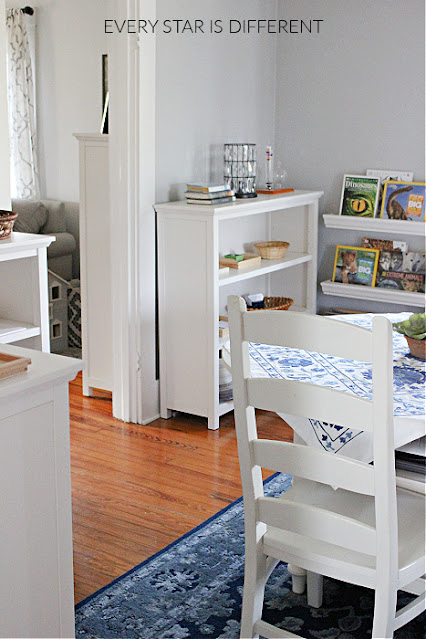


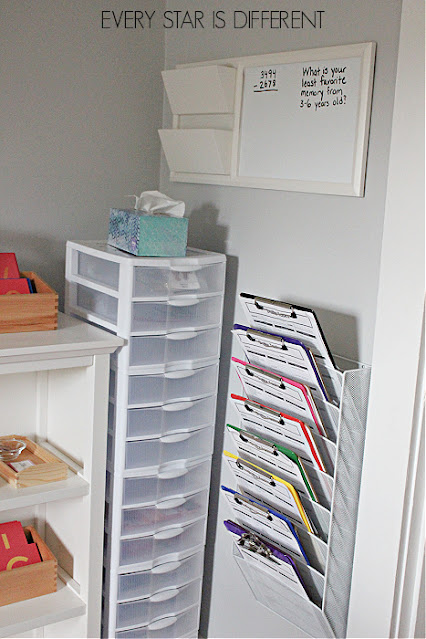
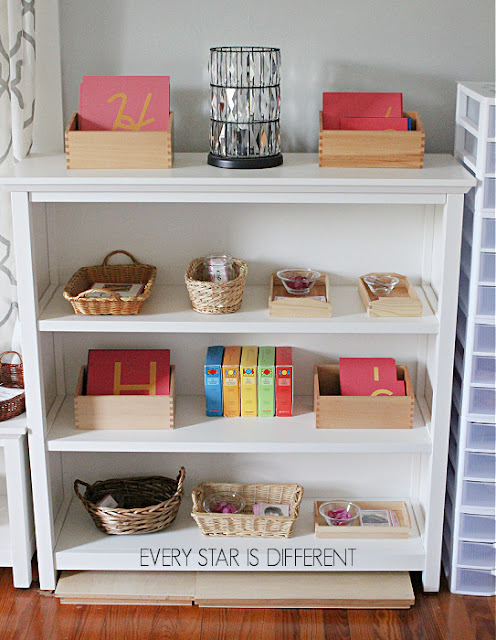






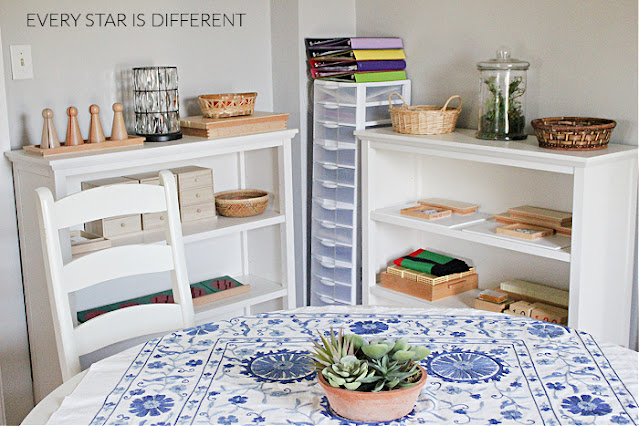









No comments:
Post a Comment